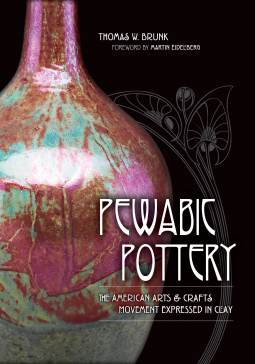
Pewabic Pottery
The American Arts and Crafts Movement Expressed in Clay
by Thomas W. Brunk
This title was previously available on NetGalley and is now archived.
Send NetGalley books directly to your Kindle or Kindle app
1
To read on a Kindle or Kindle app, please add kindle@netgalley.com as an approved email address to receive files in your Amazon account. Click here for step-by-step instructions.
2
Also find your Kindle email address within your Amazon account, and enter it here.
Pub Date May 01 2021 | Archive Date May 28 2021
Talking about this book? Use #PewabicPottery #NetGalley. More hashtag tips!
Description
Advance Praise
Thomas W. Brunk has written the definitive history of Detroit’s Pewabic Pottery. A meticulous researcher, he carefully reconstructs the chronological narrative by mining previously unavailable documents, including glaze notebooks, daybooks, and letters.
This is also the story of the determined and indomitable Mary Chase Perry Stratton, Pewabic Pottery’s founder. Martin Eidelberg’s foreword places Pewabic within the context of turn-of-the-twentieth-century Arts and Crafts potteries that were founded by women. We then meet Chase Perry, who learned the technical side of production from Horace J. Caulkins, Pewabic’s cofounder, and as a salesperson for the Revelation kiln used by china painters. Moving to Detroit, she was encouraged by Charles Lang Freer to replicate the lusters of ancient Islamic pottery. Her secret formulas, revealed here, made Pewabic’s pottery distinctive for its iridescence and textures. In time, she met, worked with, and married William B. Stratton, and together they developed the pottery, producing a wide range of art from handcrafted saleable items to architectural floor installations.
The book lays out in detail the scale, production, various locations, vicissitudes, and triumphs of the pottery. Information on gross sales compared with other potteries, as well as the contributions of Pewabic’s employees, proves that this was never a large commercial concern. The appendix on marks and labels as well as the profuse illustrations are especially helpful to collectors and scholars in dating and authenticating pieces.
The story continues through changing tastes and economic woes. After Mary Stratton’s death, her stalwart assistants struggled to keep Pewabic going. After briefly being owned by Michigan State University, it was turned over to the nonprofit that runs it now.
With his lifelong involvement with Pewabic as curator, archivist, and a founding member of the Pewabic Society that reinvigorated the pottery, Brunk was the right person to author this book. He provides a most deserving, engaging, and extensive recounting of its significance and exceptional resilience.
—Susan J. Bandes, professor of art history and museum studies, Michigan State University, and author of Mid-Michigan Modern: From Frank Lloyd Wright to Googie
Available Editions
| EDITION | Other Format |
| ISBN | 9781611863864 |
| PRICE | $55.95 (USD) |
| PAGES | 496 |



